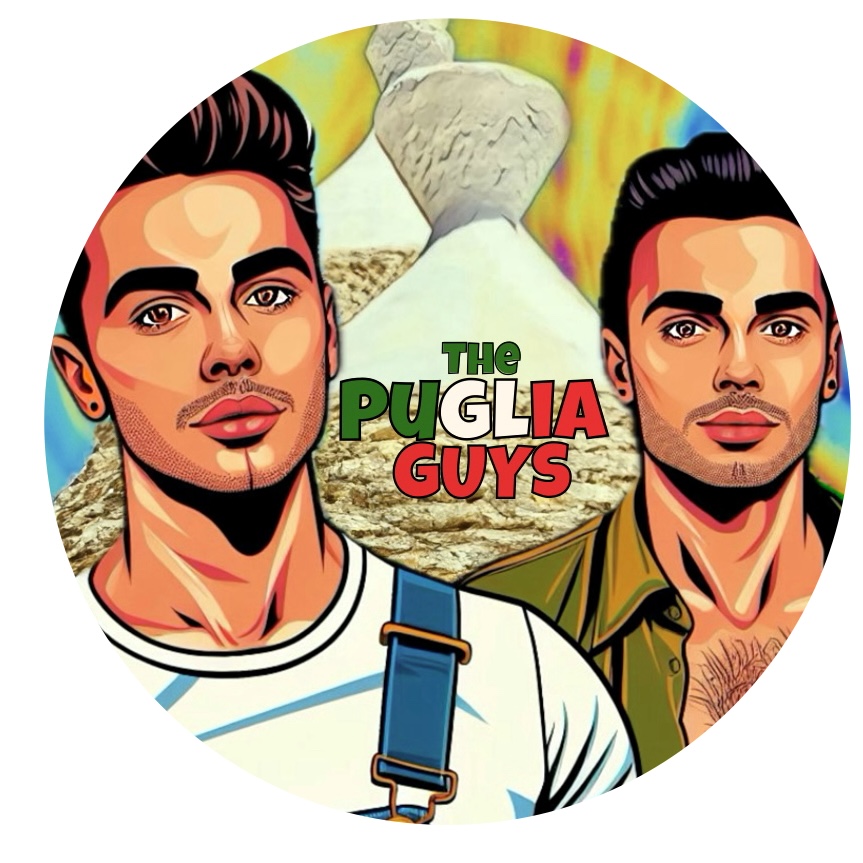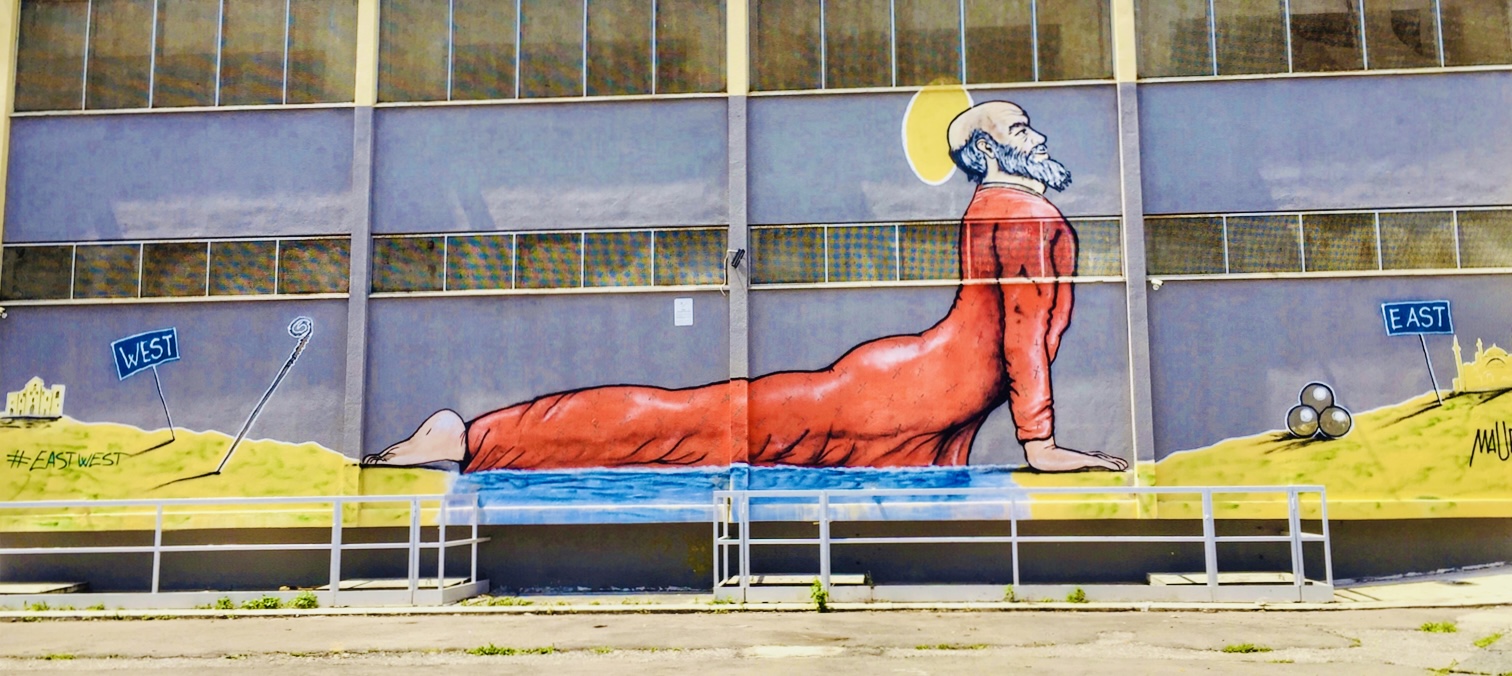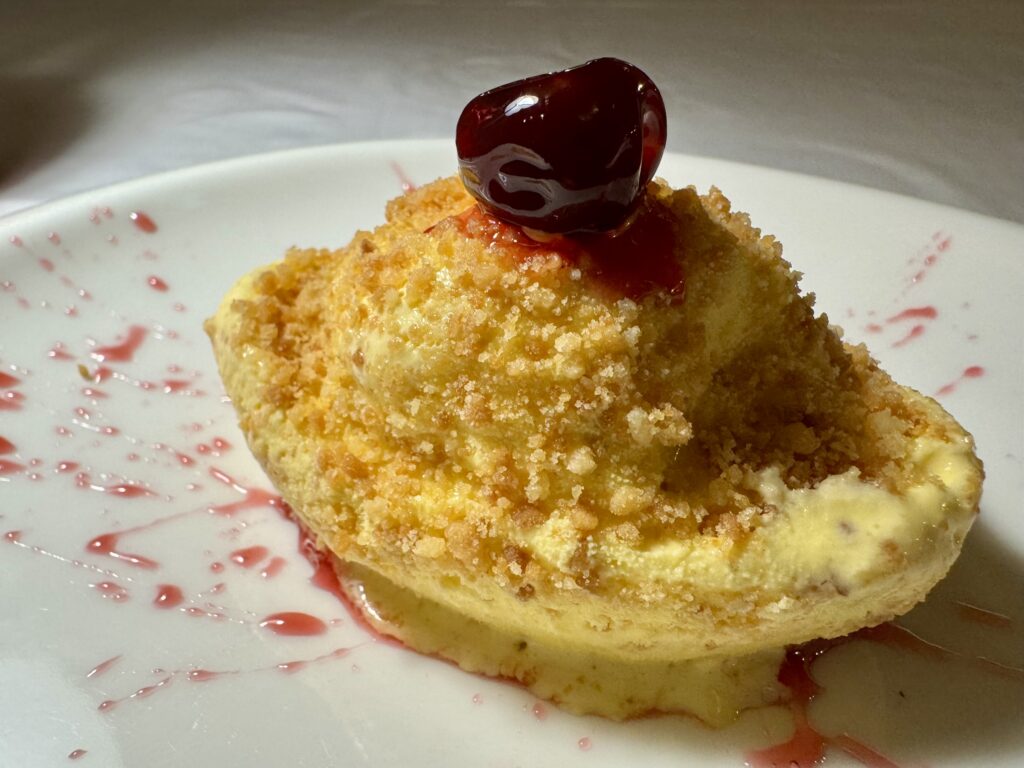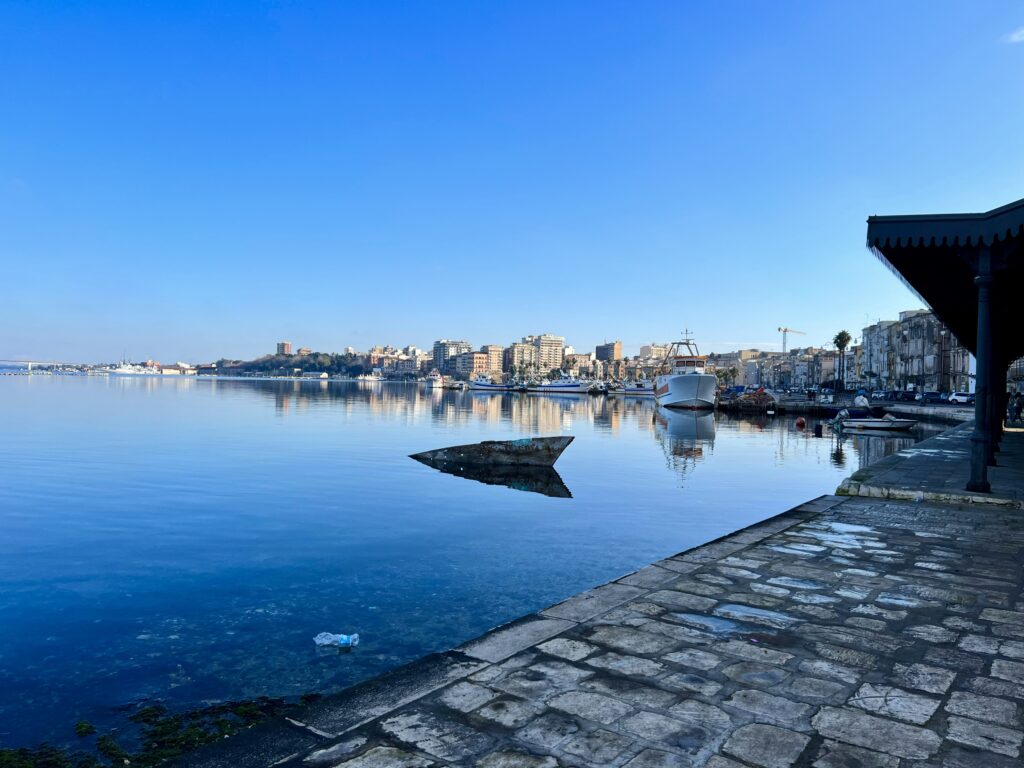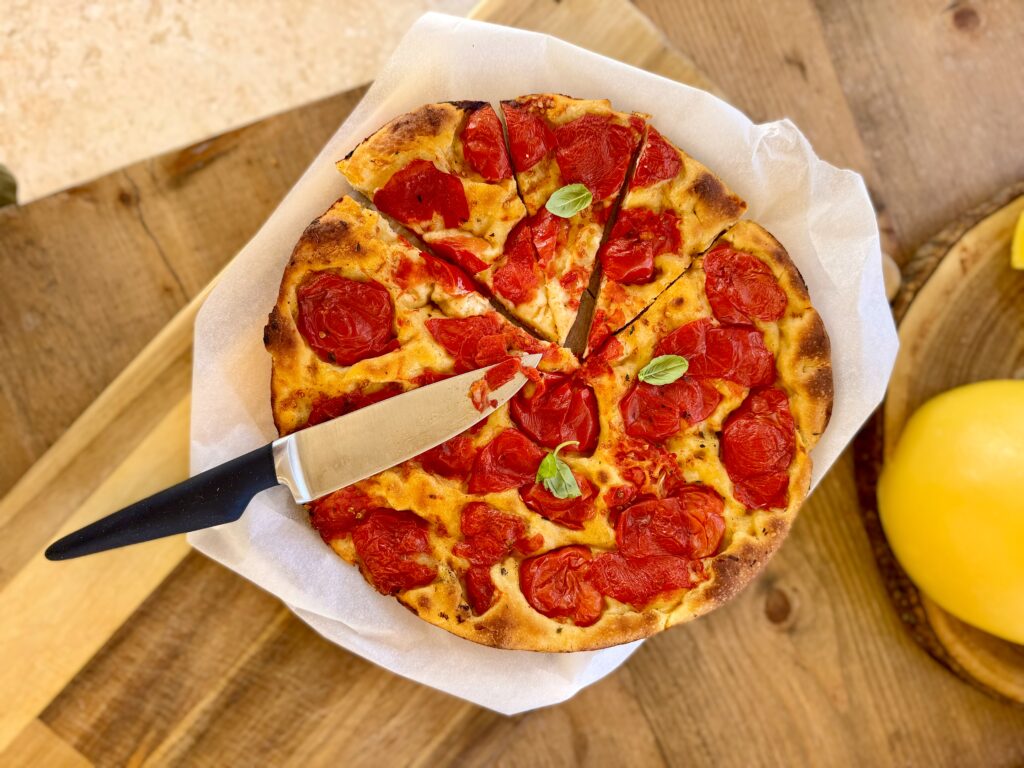San Nicola: The Patron Saint of Bari and the True Inspiration Behind Santa Claus
In the southern Italian region of Puglia, the coastal city of Bari holds a profound connection to a figure celebrated worldwide. Saint Nicholas, the 4th-century Bishop of Myra in present-day Turkey, is revered in Bari as San Nicola, the patron saint of the city. His legacy, entwined with tales of generosity and miracles, inspired the global phenomenon of Santa Claus. But in Bari, Saint Nicholas remains a revered religious figure, distinct from the commercialised Christmas icon.
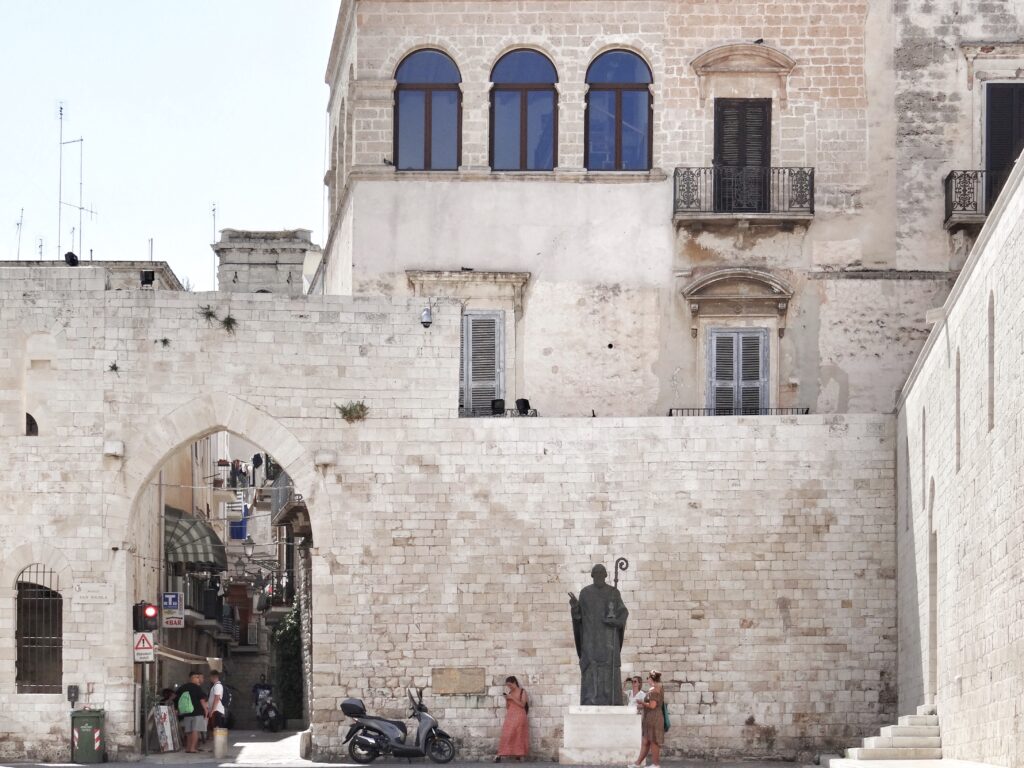
Who Was Saint Nicholas?
Saint Nicholas was born around 270 CE in Myra (modern-day Demre, Turkey) and lived a life marked by piety and benevolence. Known for his miraculous deeds, he became a protector of the poor, sailors, children, and unmarried women. Among his most famous acts is the story of secretly providing dowries for three impoverished sisters by tossing bags of gold through their window, saving them from a life of despair, a tale that helped shape the lore of the gift-giving Saint Nicholas of Christmas tradition.
Nicholas was known as a protector of the vulnerable: children, the poor, and sailors. His miracles were said to calm seas, rescue the unjustly imprisoned, and even raise children from the dead. Upon his death on 6 December – likely in 343 CE – his veneration spread rapidly throughout both Eastern and Western Christendom.
Subsequently Nicholas was canonised, and his tomb in Myra became a site of Christian pilgrimage. His reputation for generosity spread across Europe and beyond, eventually evolving into the folkloric figure of Santa Claus.
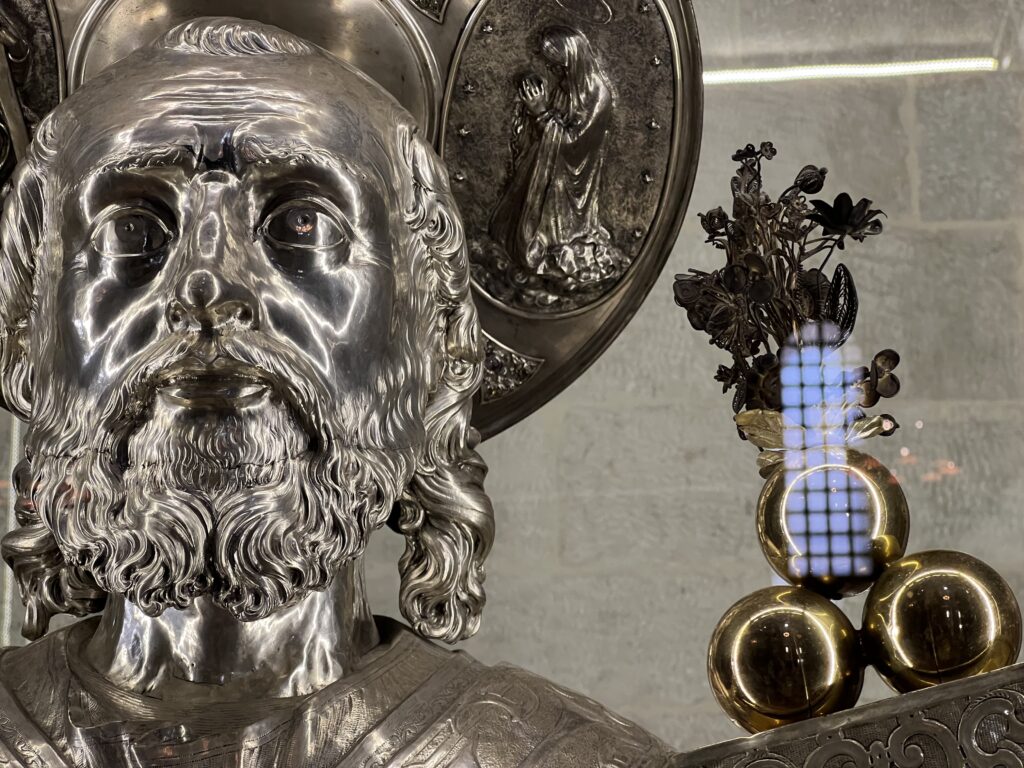
How Did His Relics Come to Bari?
The relics of Saint Nicholas reached Bari in 1087, during a period of religious and political upheaval in the Eastern Mediterranean. Myra had fallen under Seljuk rule, raising fears that Christian shrines might be desecrated or made inaccessible to pilgrims. Seizing an opportunity both spiritual and strategic, sailors and merchants from Bari launched an expedition to Myra.
The group successfully retrieved Nicholas’s remains, despite resistance from the local monks, and transported them to Bari. The relics arrived on May 9, 1087, greeted by a throng of jubilant townsfolk. To honour the saint, the citizens vowed to build a magnificent church, and by 1089, Pope Urban II consecrated the crypt of the Basilica di San Nicola.
Saint Nicholas Today: His Living Presence in Bari
Saint Nicholas is more than a historical or religious figure in Bari — he is a cultural icon whose legacy permeates everyday life.
- The Basilica di San Nicola, built in the 11th century, continues to be the focal point of devotion. It houses the saint’s relics and hosts liturgies in both Catholic and Orthodox traditions, reflecting his ecumenical significance.
- The “manna” of Saint Nicholas, a mysterious liquid believed to have healing properties, is said to form within his tomb and is collected and distributed each year.
- The Stadio San Nicola, Bari’s football (soccer) stadium, bears his name and was inaugurated in 1990. Designed by Renzo Piano, it symbolises the city’s ongoing reverence for its patron saint in both spiritual and civic life.
The Basilica di San Nicola: A Pilgrim’s Haven
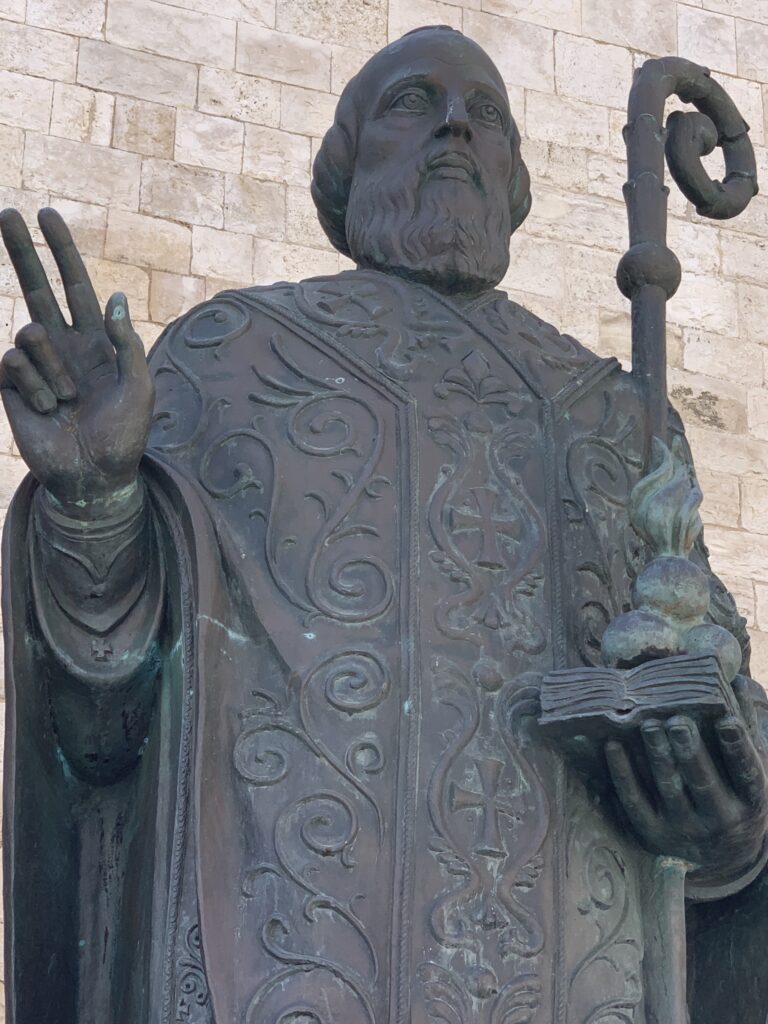
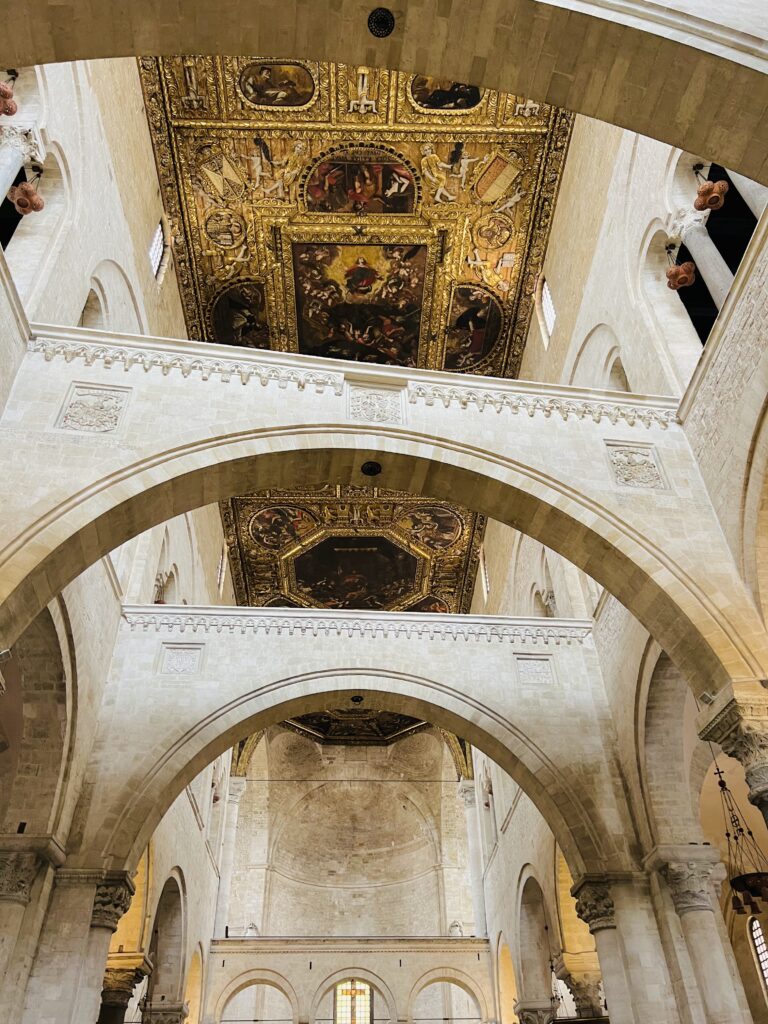
Completed in the 12th century, the Basilica di San Nicola is a masterpiece of Romanesque architecture. It stands as a symbol of Bari’s deep spiritual heritage and serves as a prominent pilgrimage site for Christians of all denominations.
The crypt of the basilica houses Saint Nicholas’s relics, (75% of them, the remaining fragments reside in Venice). Pilgrims flock to the site, drawn by the belief in the saint’s miraculous powers. Each year, on May 9, Bari commemorates the translation of the relics with vibrant festivities, including processions, concerts, and the ceremonial extraction of manna, a fragrant liquid that exudes from the saint’s tomb and is believed to possess healing properties.
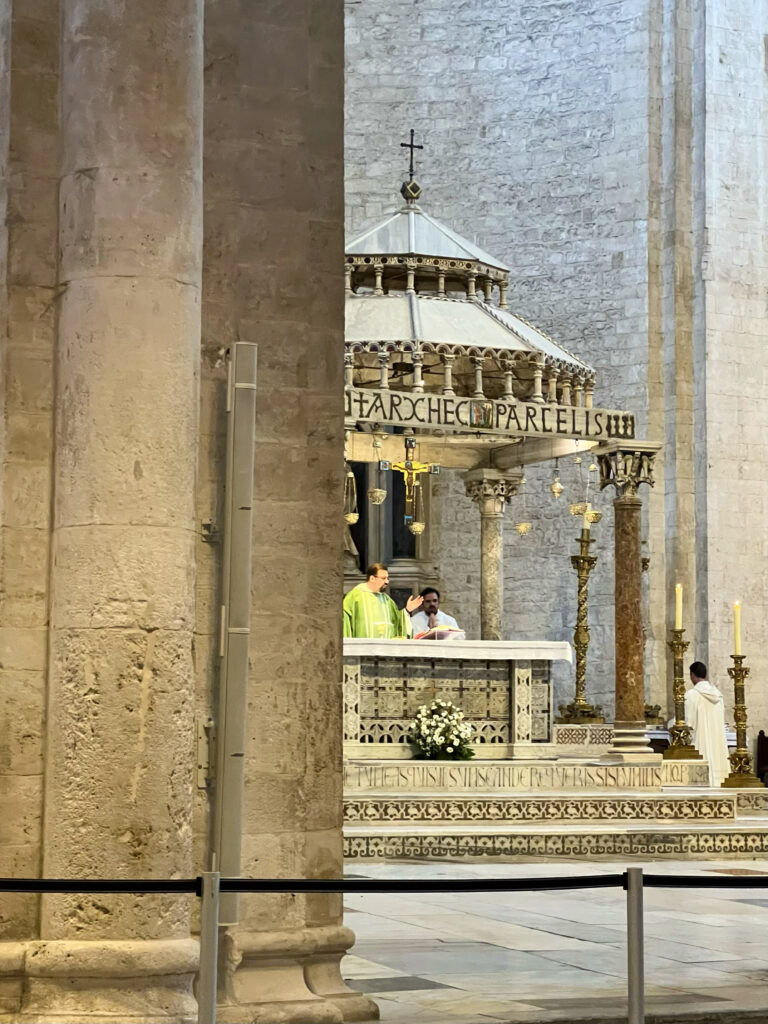
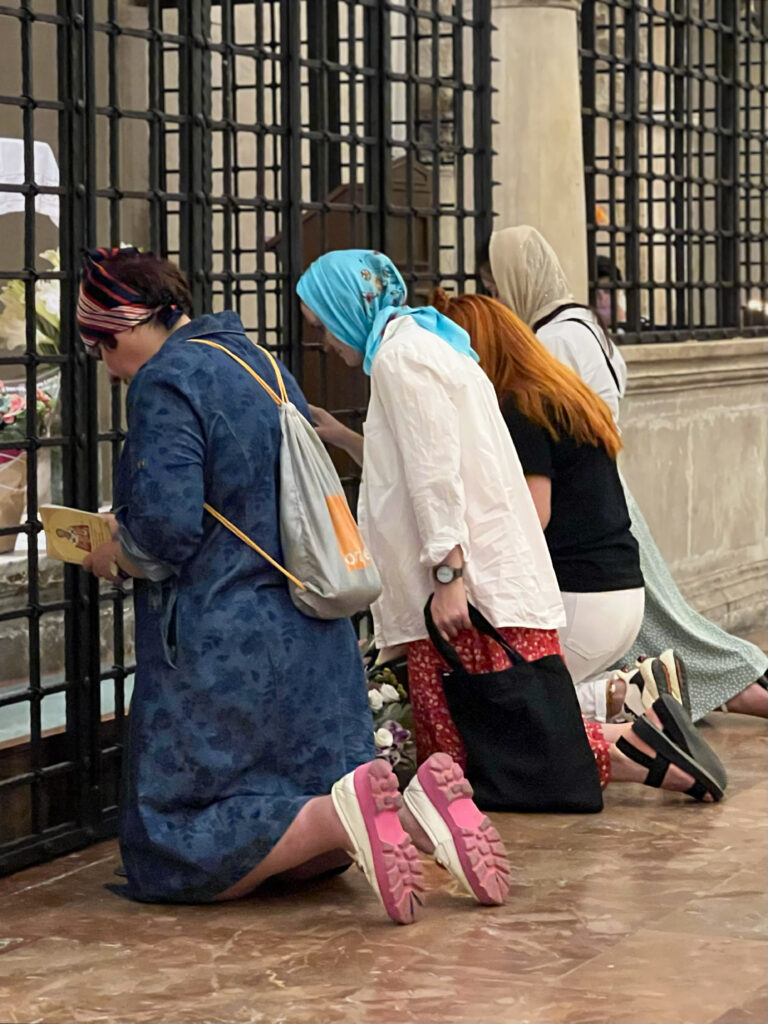
The basilica also fosters ecumenical unity, welcoming both Catholic and Orthodox worshippers. In 1966, an Orthodox chapel was established in the crypt, and in 2018, Pope Francis convened religious leaders from the Middle East in Bari to pray for peace, reinforcing the city’s role as a bridge between East and West.
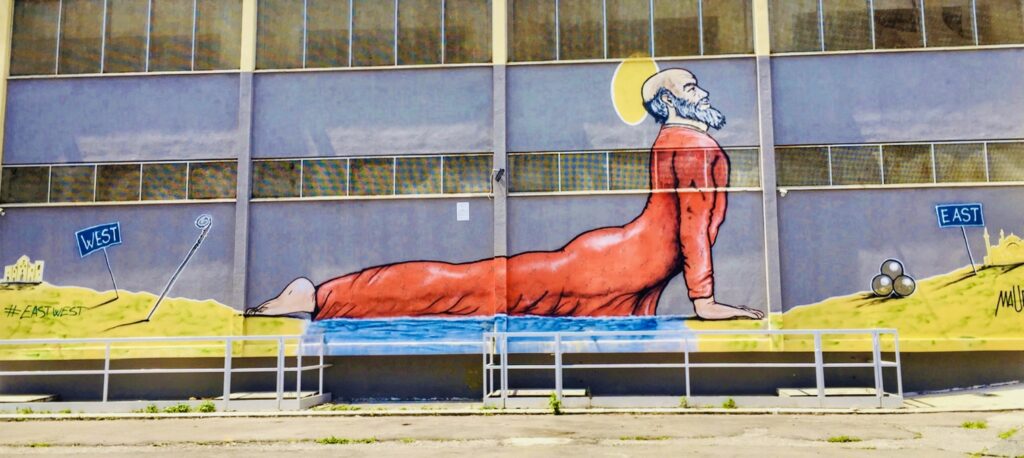
Saint Nicholas: The Protector and Patron of Bari
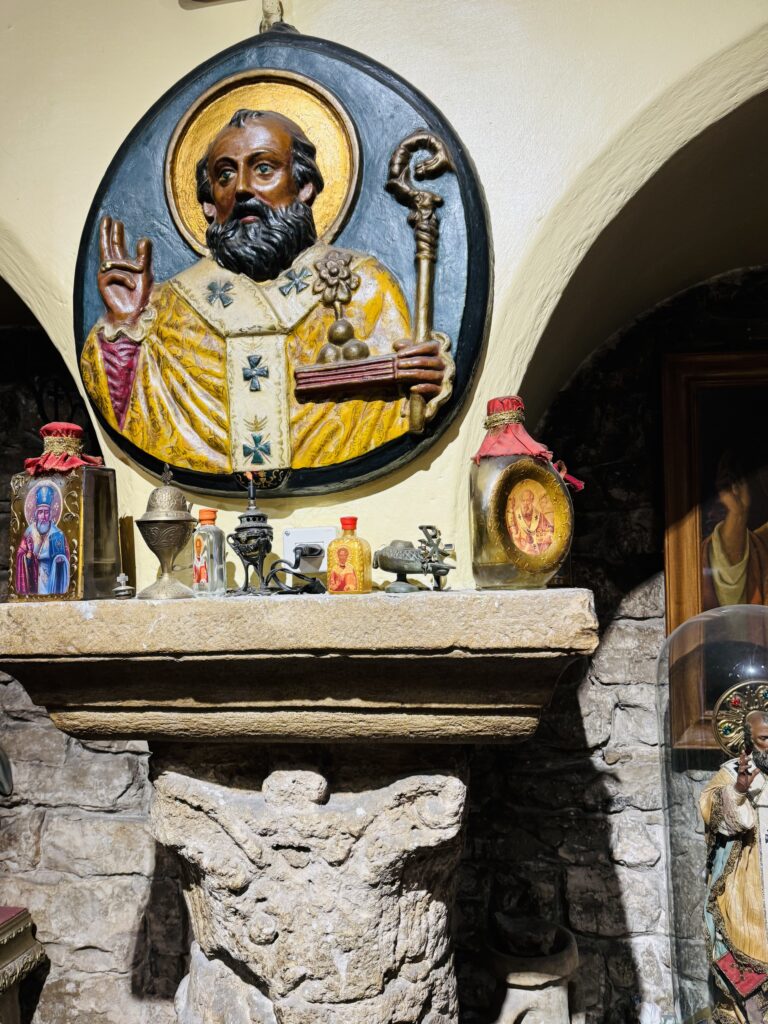
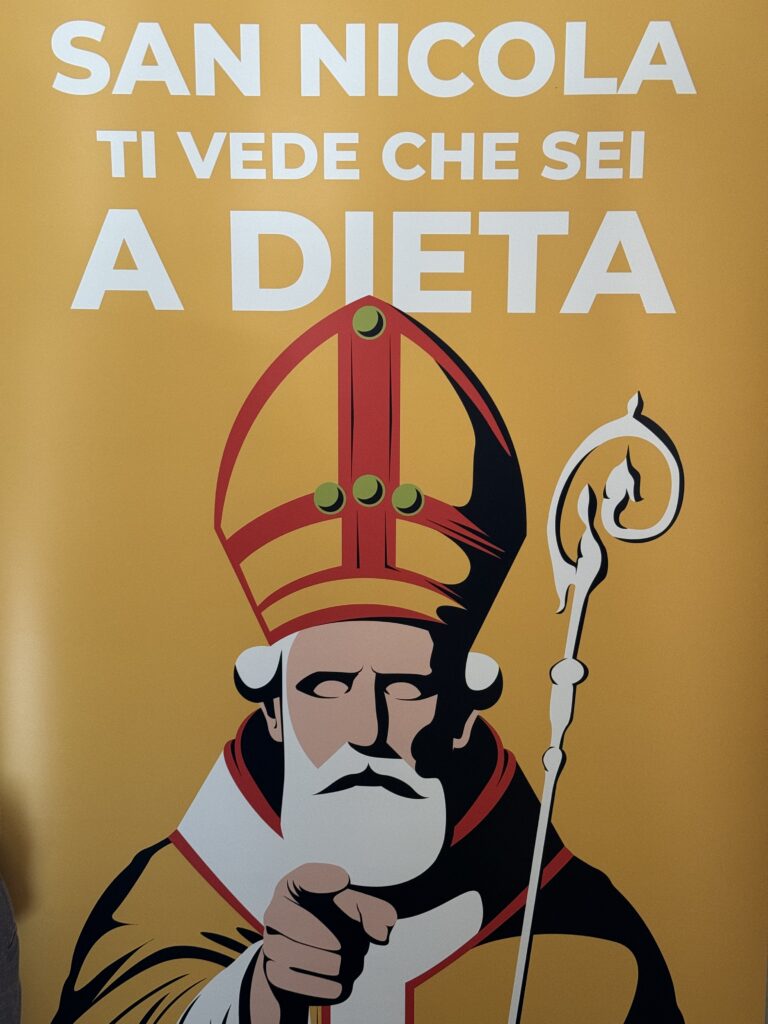
In Bari, Saint Nicholas is more than a historical figure; he is a guardian of the city and its people. Locals invoke his protection during hardships, and his image graces homes, cars, and wallets as a symbol of good fortune. His feast day on December 6 is a significant occasion, beginning with dawn Mass and culminating in street celebrations, music, and traditional foods like sgagliozze (fried polenta). The football stadium is named after him.
San Nicola’s role as a patron saint extends to unmarried women, who visit the basilica to pray for a suitable husband. He is also venerated as the protector of sailors and merchants, reflecting Bari’s historic ties to maritime trade.
At Bari’s old fishing port you will see the prayer (in almost impenetrable barese dialect) : ‘San Nicola proteggici da I rizz vacand’.
Literally asking San Nicola to protect us against “empty [sea] urchins”, but metaphorically from those with “empty heads”, i.e. those f*ckwits! It also alludes to a regional law introduced last year imposing a three year fishing ban on sea urchins to allow low stocks to repopulate.
![San Nicola poster by Andrea Visaggio. In dialect “Sande Nicole proteggici da l rizz vacand”. Literally asking Saint Nicholas to protect us agains “empty [sea] urchins” and metaphorically against the empty headed. It also alludes to the regional law banning fishing for sea urchins for three years to allow repopulation.
Photo by the Puglia Guys, Puglia ambassadors. PugliaGuys.com](https://www.pugliaguys.com/wp-content/uploads/2024/12/IMG_3521-768x1024.jpeg)
![At Bari’s old fishing port we pray to San Nicola to protect us against ”rizz vacand”. Literally asking Saint Nicholas to protect us agains “empty [sea] urchins” and metaphorically against the empty headed. It also alludes to the regional law banning fishing for sea urchins for three years to allow repopulation.
Photo by the Puglia Guys, Puglia ambassadors. PugliaGuys.com](https://www.pugliaguys.com/wp-content/uploads/2024/12/IMG_3715-1-768x1024.jpeg)
The Santa Claus Connection
While Bari treasures Saint Nicholas as San Nicola, locals are less enthusiastic about his transformation into Santa Claus. The modern image of the jolly, red-suited gift-giver owes much to American commercialisation, particularly Coca-Cola’s 1930s advertising campaign. For many in Bari, this version of Saint Nicholas feels disconnected from their cherished patron saint.
However, the link between Saint Nicholas and Santa Claus has boosted tourism in Bari. Guided tours, murals, and even a locally brewed San Nicola beer celebrate the city’s unique claim to “the real Santa.” Efforts are underway to further promote Bari’s association with Christmas lore, blending the saint’s spiritual significance with his global cultural appeal.
Merry Christmas
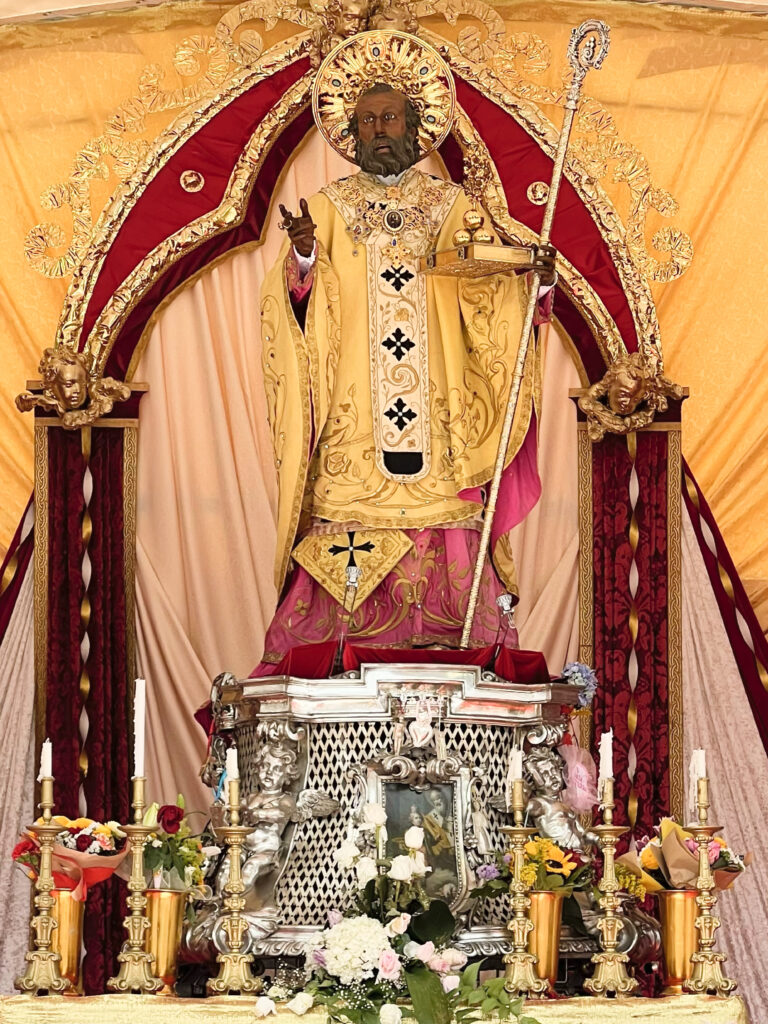
For nearly a millennium, Bari has been the guardian of Saint Nicholas’s relics and his enduring legacy. The Basilica di San Nicola remains a beacon of faith and unity, drawing pilgrims from around the world to honour a man whose life of generosity and compassion continues to inspire.
Whether as the patron saint of Bari or the mythical Santa Claus, Saint Nicholas’s story is a testament to the profound impact of kindness—a message that transcends time, culture, and tradition.
The Symbolism of San Nicola
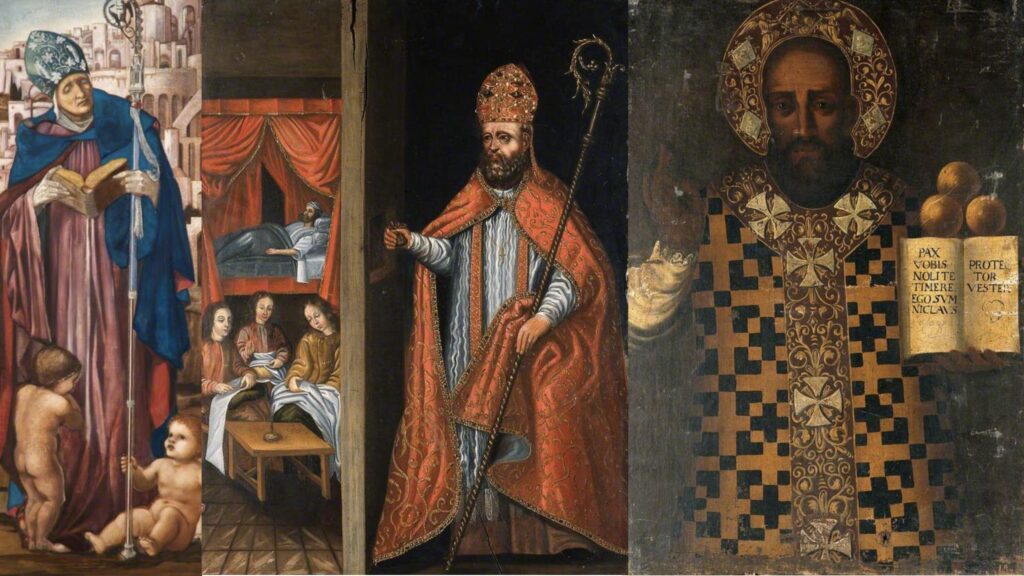
A number of symbols help us recognise San Nicola, developed from popular stories and customs.
- The mitre and crosier represent Bishop Nicholas, but also identify him as a gift-giver.
- San Nicola is the patron saint of maiden women. The three gold balls (sometimes three gold coins or money bags) represent the dowry given to the husband. The gold balls became the pawnbroker’s symbol.
- Three maidens and three children are often represented because San Nicola is their patron saint. Likewise an anchor or boat (for the sea, ships and sailors).
- Shoes are also present in images of San Nicola – filled with carrots or hay for his horse or donkey, San Nicola will replace them with treats for children.
- A large book represents his “naughty list” – yes San Nicola really knows whether children have been bad or good, and keeps lists in his book. So be good for goodness sake!
Did you ever wonder where those baubles on your Christmas tree came from?
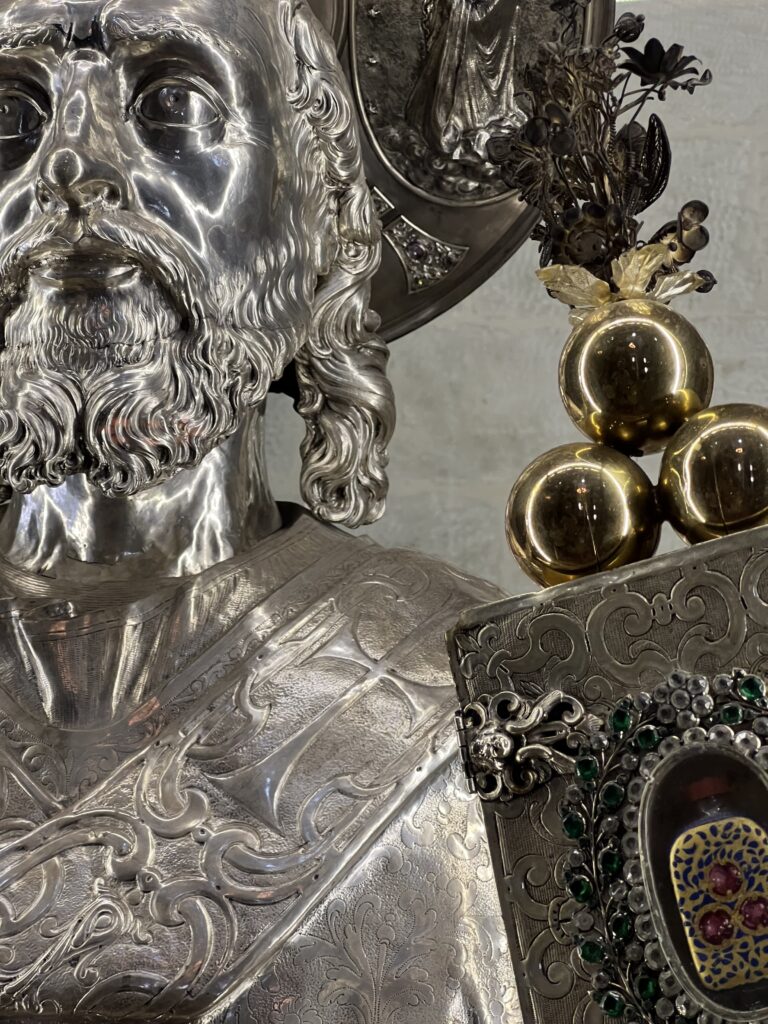
The May Feast of Saint Nicholas: A Celebration of Faith and Identity
Bari’s most important annual celebration of Saint Nicholas takes place in early May. The Festa di San Nicola, held from 7 to 9 May, commemorates the arrival of the saint’s relics in 1087. It is a blend of solemn religious ceremonies, grand public spectacles, and local traditions. Residents pack the streets city’s streets. The event draws huge numbers of pilgrims and international visitors, for its spectacle and reputation.
The key events across the three days include
7 May – The Maritime Procession and Historical Pageant
- Morning: Preparations begin early at San Giorgio Bay, where a painting of Saint Nicholas is placed aboard a fishing boat. This boat becomes the centrepiece of a grand maritime procession, echoing the voyage of 1087.
- Late afternoon (from 6:00 p.m.): Dozens of boats, ranging from small fishing vessels to yachts, participate in a ceremonial procession along the coast. Music, lights, and water displays accompany the journey, which culminates in the return of the image to the old port.
- Evening (from 8:30 p.m.): A dramatic historical re-enactment unfolds in front of Bari’s Castello Normanno-Svevo. Hundreds of costumed participants recreate the medieval world of the 11th century, culminating in the arrival of the saint at the Basilica di San Nicola.
- Late Evening (from 10:00 p.m.): The evening ends with solemn prayers and hymns inside the basilica, celebrating Saint Nicholas as a bridge between East and West.
8 May – The Sea Procession and Air Display
- Early morning mass (5:00 a.m.): A quiet, intimate religious ceremony takes place in the crypt of the basilica.
- Mid morning (from 10:00 a.m.): The main procession features a silver statue of Saint Nicholas carried through the streets of Bari by chosen “portatori” (bearers). Confraternities, musicians, clergy, and locals in traditional attire fill the city with music and colour.
- Maritime Procession: The statue is transferred to a boat and sails once again, symbolising the saint’s connection to sailors and the sea.
- Afternoon (from 4:00 p.m.): The Italian Air Force’s Frecce Tricolori perform a thrilling aerial display above Bari’s seafront.
- Evening (from 8:00 p.m.): A candlelight procession through Piazza del Ferrarese marks the saint’s return to the basilica, turning the square into a luminous cathedral under the stars.
- Late evening (from 10:00 p.m.): A grand fireworks display at Molo Sant’Antonio closes the day’s events.
9 May – Commemoration of the Relics and Manna Collection
- Morning mass (6:00 p.m.): The anniversary of the relics’ arrival is marked by a special Mass in the basilica’s crypt. The Dominican fathers ceremonially collect the “manna” from the saint’s tomb.
- Traditional Hymns: Barese families sing centuries-old hymns, passed down through generations.
- Closing events (from 10:00 p.m.): The festival ends with a final fireworks show over the sea, accompanied by local music.
A Saint for All
Saint Nicholas’s influence is not limited to the Catholic Church. He is venerated across Christian denominations, including the Orthodox and Protestant traditions. Orthodox Christians, in particular, maintain a deep devotion to Saint Nicholas and make pilgrimages to Bari to honour his relics. Services in Greek, Russian, and other languages are held regularly in the basilica’s crypt, highlighting the saint’s universal appeal and ecumenical importance.
More Bari
Eat Bari: Our Best of Bari Eating Out Guide | discover our favourite places in Bari to eat typical Bari dishes.
The Story of Spaghetti Assassina | Bari’s iconic pasta dish. Including the authentic accademia approved spaghetti all’assassina recipe!
For opening times check the Basilica di San Nicola official website. Tour Bari and visit the Basilica with Free Walking Tour Bari.
